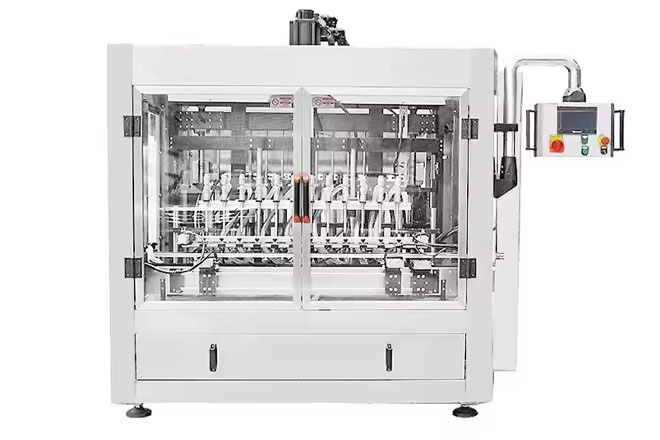1. Preparation:
Filling machine operators first inspect the equipment to ensure that all parts are in good condition and perform necessary cleaning and disinfection.
Make sure you have a sufficient supply of empty bottles and caps, as well as any disinfectants or cleaning solutions that may be needed.
2. Conveying bottles:
Empty bottles are sent to the filling position of the filling machine through a conveyor belt system or other conveying device.
The conveyor belts are usually spaced appropriately to ensure that each bottle has enough time to enter the filling position.
3. Filling:
Once the empty bottle reaches the filling position, the filling machine starts automatically injecting purified water into the bottle.
The water injection process usually includes the following steps:
Bottle positioning: Ensure the bottle mouth is accurately aligned with the filling nozzle.
Open the filling valve: Control the filling valve through the control system and start water injection.
Monitor water filling: Typically a flow meter or level sensor is used to monitor water filling to ensure each bottle is filled correctly.
Close the valve: Once water filling is complete, close the filling valve.
4.Lid sealing:
After filling is completed, the bottles are transported to the cap sealing position.
The filling machine automatically places the cap on the bottle mouth and applies appropriate pressure or rotational action to close it.
Cap sealing usually involves methods such as heat sealing or pressure sealing to ensure good sealing performance.
5. Label (optional):
If required, filled bottles can be conveyed to a labeling location.
In this step, a label is usually automatically or manually affixed to the bottle, providing necessary information such as product information, production date, etc.
6. Packaging:
Finally, the filled and sealed bottles are conveyed to the packaging area.
Bottles can be packaged by automatic packaging machines or manually.
Packaging usually includes cartoning, shrink film packaging and other methods to ensure the safe transportation and preservation of the product.
7. Quality control:
Filling machines are often equipped with sensors and control systems to monitor and control various steps throughout the process.
Quality control includes testing filling volume, cap sealing quality, label attachment position, etc. to ensure that the products produced meet quality standards and safety requirements.
The degree of automation of the entire process can vary based on production needs and equipment configuration, but the basic steps and principles are usually similar.

Contact: Kris.Jiang
Phone: +86-13512184818
E-mail: Kris.jiang@sr-packing.com
Add: No. 18, Changting Road, Fengxian District, Shanghai, China